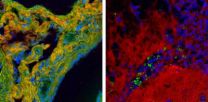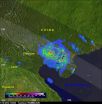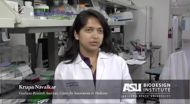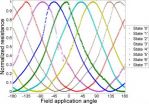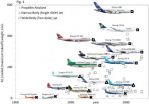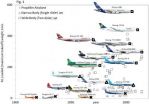Vanderbilt study shows therapeutic bacteria prevent obesity in mice
2014-07-22
(Press-News.org) A probiotic that prevents obesity could be on the horizon. Bacteria that produce a therapeutic compound in the gut inhibit weight gain, insulin resistance and other adverse effects of a high-fat diet in mice, Vanderbilt University investigators have discovered.
"Of course it's hard to speculate from mouse to human," said senior investigator Sean Davies, Ph.D., assistant professor of Pharmacology. "But essentially we've prevented most of the negative consequences of obesity in mice, even though they're eating a high-fat diet."
Regulatory issues must be addressed before moving to human studies, Davies said, but the findings published in the August issue of the Journal of Clinical Investigation suggest that it may be possible to manipulate the bacterial residents of the gut – the gut microbiota – to treat obesity and other chronic diseases.
Davies has a long-standing interest in using probiotic bacteria – "friendly" bacteria like those in yogurt – to deliver drugs to the gut in a sustained manner, in order to eliminate the daily drug regimens associated with chronic diseases.
In 2007, he received a National Institutes of Health Director's New Innovator Award to develop and test the idea.
"The NIH basically said, 'we like this idea, now make it work,'" Davies said. "The New Innovator Award was critical to our success."
Other studies have demonstrated that the natural gut microbiota plays a role in obesity, diabetes and cardiovascular disease.
"The types of bacteria you have in your gut influence your risk for chronic diseases," Davies said. "We wondered if we could manipulate the gut microbiota in a way that would promote health."
To start, the team needed a safe bacterial strain that colonizes the human gut. They selected E. coli Nissle 1917, which has been used as a probiotic treatment for diarrhea since its discovery nearly 100 years ago.
They genetically modified the E. coli Nissle strain to produce a lipid compound called NAPE, which is normally synthesized in the small intestine in response to feeding. NAPE is rapidly converted to NAE, a compound that reduces both food intake and weight gain. Some evidence suggests that NAPE production may be reduced in individuals eating a high-fat diet.
"NAPE seemed like a great compound to try – since it's something that the host normally produces," Davies said.
The investigators added the NAPE-producing bacteria to the drinking water of mice eating a high-fat diet for eight weeks. Mice that received the modified bacteria had dramatically lower food intake, body fat, insulin resistance and fatty liver compared to mice receiving control bacteria.
They found that these protective effects persisted for at least four weeks after the NAPE-producing bacteria were removed from the drinking water. And even 12 weeks after the modified bacteria were removed, the treated mice still had much lower body weight and body fat compared to the control mice. Active bacteria no longer persisted after about six weeks.
"We still haven't achieved our ultimate goal, which would be to do one treatment and then never have to administer the bacteria again," Davies said. "Six weeks is pretty long to have active bacteria, and the animals are still less obese 12 weeks out.
"This paper provides a proof of concept," he said. "Clearly, we can get enough bacteria to persist in the gut and have a sustained effect. We would like for that effect to last longer."
Davies noted that the researchers also observed effects of the compounds in the liver, suggesting that it may be possible to use modified bacteria to deliver therapeutics beyond the gut.
The investigators are currently working on strategies to address regulatory issues related to containing the bacteria, for example by knocking out genes required for the bacteria to live outside the treated host.
INFORMATION:
Zhongyi Chen, M.D., Ph.D., and Lilu Guo, Ph.D., are co-first authors of the JCI paper. This research was supported by the New Innovator Award (OD003137) and by other grants from the National Institutes of Health (AT007830, DK059637, DK020593, RR024975, DK092993).
ELSE PRESS RELEASES FROM THIS DATE:
Enhanced NIST instrument enables high-speed chemical imaging of tissues
2014-07-22
A research team from the National Institute of Standards and Technology (NIST), working with the Cleveland Clinic, has demonstrated a dramatically improved technique for analyzing biological cells and tissues based on characteristic molecular vibration "signatures." The new NIST technique is an advanced form of the widely used spontaneous Raman spectroscopy, but one that delivers signals that are 10,000 times stronger than obtained from spontaneous Raman scattering, and 100 times stronger than obtained from comparable "coherent Raman" instruments, and uses a much larger ...
NASA's TRMM satellite measures up Super Typhoon Rammasun
2014-07-22
NASA's TRMM satellite measured up Super Typhoon Rammasun's rainfall rates, rainfall totals and cloud heights providing a look at the inner workings and aftermath of the storm.
Super Typhoon Rammasun struck the southern coast of China on Friday, July 18 as a very powerful super typhoon with sustained winds estimated at 135 knots (~155 mph or equivalent to a Category 5 hurricane on the US Saffir-Simpson scale), making it the strongest typhoon to hit the area in several decades.
Rammasun made landfall at 3:30 p.m. (local time) on Hainan Island where the southern half of ...
Preschoolers can reflect on what they don't know
2014-07-22
Contrary to previous assumptions, researchers find that preschoolers are able to gauge the strength of their memories and make decisions based on their self-assessments. The study findings are published in Psychological Science, a journal of the Association for Psychological Science.
"Previously, developmental researchers assumed that preschoolers did not introspect much on their mental states, and were not able to reflect on their own uncertainty when problem solving," says psychological scientist Emily Hembacher of the University of California, Davis, lead author of ...
Extra exercise helps depressed smokers kick the habit faster
2014-07-22
This news release is available in French. Montreal, July 22, 2014 — People diagnosed with depression need to step out for a cigarette twice as often as smokers who are not dealing with a mood disorder. And those who have the hardest time shaking off the habit may have more mental health issues than they are actually aware of.
Those insights were among the collective findings recently published in the journal Nicotine & Tobacco Research by a team of researchers based in part at Concordia University.
While nearly one in five North American adults are regular smokers, ...
CEOs who motivate with 'fightin' words' shoot themselves in the foot
2014-07-22
Heading into the war room to fire up the troops? Declaring war on the competition to boost sales? Well, CEO, you might want to tamp down them's fightin' words—you could be shooting yourself in the foot.
A new Brigham Young University business study finds that bosses who try to motivate their employees with violent rhetoric—think of Steve Jobs declaring "thermonuclear war" on Samsung—end up motivating rival employees to play dirty.
"Business executives use violent language all the time," said David Wood, BYU professor of accounting and one of two BYU authors on the paper. ...
Dangers of desert dust: New diagnostic tool for valley fever
2014-07-22
VIDEO:
In this video, biodesign researcher Krupa Navalkar describes a new diagnostic technique for pinpointing Valley Fever.
Click here for more information.
On July 5, 2011, a massive wall of dust, ("haboob," in Arabic), blanketed Phoenix, Arizona, creating an awesome spectacle, (or stubborn nuisance, depending on your perspective). Dust storms are a common occurrence in the arid desert environments of the American Southwest.
But windborne dust can be a serious health risk, ...
A new multi-bit 'spin' for MRAM storage
2014-07-22
WASHINGTON D.C., June 22, 2014 -- Interest in magnetic random access memory (MRAM) is escalating, thanks to demand for fast, low-cost, nonvolatile, low-consumption, secure memory devices. MRAM, which relies on manipulating the magnetization of materials for data storage rather than electronic charges, boasts all of these advantages as an emerging technology, but so far it hasn't been able to match flash memory in terms of storage density.
In the journal Applied Physics Letters, from AIP Publishing, a France-U.S. research team reports an intriguing new multi-bit MRAM storage ...
Fly-inspired sound detector
2014-07-22
WASHINGTON D.C., June 22, 2014 – Even within a phylum so full of mean little creatures, the yellow-colored Ormia ochracea fly is distinguished among other arthropods for its cruelty -- at least to crickets. Native to the southeastern U.S. states and Central America, the fly is a most predatory sort of parasite. It swoops onto the back of a singing male cricket, deposits a smear of larvae, and leaves its wicked brood to invade, kill and consume the cricket from inside out.
None of this would be possible without the fly's ability to find a cricket -- the cornerstone of ...
Law of physics governs airplane evolution
2014-07-22
DURHAM, N.C. -- Researchers believe they now know why the supersonic trans-Atlantic Concorde aircraft went the way of the dodo -- it hit an evolutionary cul-de-sac.
In a new study, Adrian Bejan, professor of mechanical engineering and materials science at Duke University, shows that a law of physics he penned more than two decades ago helps explain the evolution of passenger airplanes from the small, propeller-driven DC-3s of yore to today's behemoth Boeing 787s. The analysis also provides insights into how aerospace companies can develop successful future designs.
The ...
The evolution of airplanes
2014-07-22
WASHINGTON D.C. July 22, 2014 -- One of the traditional arguments against Darwinian evolution has been that no one can confirm the process exists because it occurs on a time scale immensely greater than a human lifetime. Adrian Bejan, the J. A. Jones Distinguished Professor of Mechanical Engineering at Duke University, has disagreed with that notion ever since 1996 when he discovered the Constructal Law, a fundamental principle of physics that underlies the evolution of flow systems as they change in design over time.
In a new paper in the Journal of Applied Physics, ...
